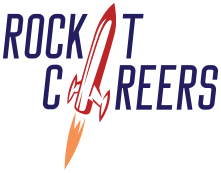“Alright, Sarah,” I said, leaning forward in my chair, “let’s tackle this LinkedIn hurdle. You’ve got a fantastic profile, highlighting your project management skills, but your network feels… well, a bit quiet.” Sarah nodded, a familiar look of frustration on her face. “It’s like shouting into the void! I send connection requests, sometimes with personalized notes, but barely hear back. And the thought of actually asking someone to meet? Forget about it!”
I smiled reassuringly. “It doesn’t have to feel that way. Think of LinkedIn as a vibrant networking event, just online. You wouldn’t walk up to a stranger and immediately ask for a coffee meeting, would you? It’s about building a connection first.”
Over the next hour, we mapped out a strategy, focusing on quality over quantity and a thoughtful approach to the follow-up. Weeks later, Sarah bounded into my office, a huge grin on her face. “It worked!” she exclaimed. “I connected with three key people in the industry, had two virtual coffees, and one of them even mentioned a potential opportunity!”
Sarah’s success wasn’t luck. It was the result of a deliberate and strategic approach to LinkedIn connections and follow-ups. If you’re feeling like Sarah did, here are some of the best ways to make meaningful LinkedIn connections and gracefully move towards an informational meeting.
LinkedIn is more than just an online resume; it’s a powerful tool for building your professional network. But simply clicking “connect” isn’t enough. To truly leverage its potential, you need a thoughtful strategy for both making initial connections and nurturing those relationships.
Part 1: Crafting Meaningful Connection Requests
Personalize Your Invitations: The generic “I’d like to add you to my professional network” is forgettable. Take the time to write a brief, personalized note. Mention:
- A shared connection: “Hi [Name], I noticed we’re both connected to [Mutual Connection]. I’m impressed by your work in [Their Industry/Role].”
- Something specific about their profile or recent activity: “Hello [Name], I enjoyed reading your recent article on [Topic] and found your insights on [Specific Point] particularly relevant to my work in [Your Industry/Role].”
- A common group or interest: “Hi [Name], I saw you’re a member of the [LinkedIn Group]. I’m also passionate about [Shared Interest] and would be interested in connecting.”
Focus on Quality Over Quantity: Don’t aim to connect with everyone and their dog. Instead, identify individuals whose work genuinely interests you, who are in roles you aspire to, or who work at companies you’re targeting. A smaller network of engaged connections is far more valuable than a large, inactive one.
Engage Before You Connect (Sometimes): Before sending a connection request, consider interacting with their content. Like, comment, or share their posts. This shows genuine interest and increases the likelihood of them recognizing your name when the connection request arrives.
Be Mindful of Your Profile: Ensure your own profile is up-to-date, professional, and clearly communicates your value proposition. People are more likely to connect with someone who presents themselves well.
Part 2: The Art of the Follow-Up and Asking to Meet
Once someone accepts your connection request, don’t let the relationship stagnate. A thoughtful follow-up is key to moving towards a meeting.
Send a Thank-you Message: A simple “Thank you for connecting!” goes a long way. You can also reiterate something you found interesting about their profile or work.
Engage with Their Content Regularly: Continue to like, comment on, and share their posts. This keeps you top-of-mind and demonstrates ongoing interest.
Look for Natural Conversation Starters: If they share an update about a project, a new role, or an industry event, take the opportunity to comment or ask a relevant question. This builds rapport and opens a dialogue.
The Gentle Ask (Timing is Key): After a few meaningful interactions, when there’s a natural flow to the conversation, you can consider asking for a brief informational meeting. Here’s how to do it effectively:
- Frame it as an opportunity to learn: “I’ve been following your work at [Company] with great interest, particularly your insights on [Specific Area]. I’m currently exploring [Your Area of Interest/Career Goals] and would be grateful for the opportunity to learn more about your experience and any advice you might have.
- Suggest a low-commitment format: “Would you be open to a brief 15-20 minute virtual coffee chat sometime in the next week or two?”
- Be specific about what you hope to gain: “I’m particularly interested in understanding more about [Specific Question related to their work/career path].”
- Offer flexibility: “Please let me know what time works best for you. I’m happy to accommodate your schedule.”
Respect Their Time and Boundaries: If someone doesn’t respond or declines your request, don’t take it personally. They may be busy or have their own reasons. Thank them for their time and continue to engage with their content occasionally.
The Takeaway:
Building meaningful LinkedIn connections and securing informational meetings is a marathon, not a sprint. By focusing on genuine engagement, personalized communication, and a respectful approach, you can transform your LinkedIn network into a valuable asset for your career journey. Just like Sarah, you might be surprised by the opportunities that unfold when you connect and follow up with intention.

